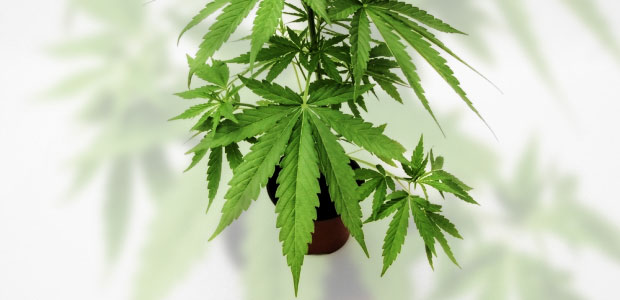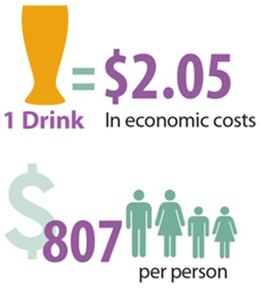
Get Out Your Checkbook: What Legalized Marijuana is Going to Cost
With such overwhelming support, one could assume that legalization has clear benefits for everyone. That assumption is not only costly, it could prove to be dead wrong.
- By Nina M. French
- Sep 01, 2017
This year is shaping up to be one of activism and opinion like few before. The nightly news, social media, and even the dinner table are alive with debate about legislation, politics, and the role of government.
Although it may have taken a back seat during Washington’s recent change in administration, the legalization of marijuana remains a topic about which people are willing to parley. Proponents of legalization often support their position with evidence of suffering that has been alleviated by marijuana. The "middle of the line" supporters generally adopt a more laissez faire attitude: that adults should be able to make their own decisions; that smoking marijuana is no different than having a cocktail; or that the government should not be involved in the regulations of such things.
Opponents, however, are often deemed overly conservative, overly cautious, backwards thinkers. In an October 2016 Gallup poll, over 60 percent of Americans polled supported the legalization of marijuana. That is the highest approval rating in the poll's 47-year history. The approval is spread across all groups, too: millennials to baby boomers, urbanites to ruralists, the so-called "1 percent," and those living below the poverty line. With such overwhelming support, one could assume that legalization has clear benefits for everyone. That assumption is not only costly, it could prove to be dead wrong.

According to the Centers for Disease Control and Prevention (CDC), marijuana is the second-most abused drug in the United States, after alcohol.
Many people fail to realize that alcohol, although legal, costs employers and taxpayers millions of dollars each year. In 2010, the cost of excessive alcohol use in the United States reached $249 billion, and two out of every five dollars of those costs were paid by federal, state, and local governments—all funded by the taxpayer. In fact, of this $249 billion drain on the American economy, $179 billion is directly associated to workplace productivity, and an additional $28 billion to health care costs. It is fair to assume that, as marijuana continues to be legalized, its costs will begin to equal or even surpass those of alcohol.1
As legalization continues to expand, more statistics are highlighting the negative impact of marijuana. From 2012 to 2013, positive tests for marijuana in the workplace increased 6.2 percent nationally, according to Quest Diagnostics. After marijuana was legalized in Colorado and Washington state, positive marijuana drug test results increased to 20 and 23 percent, respectively. And, according to the National Highway Transportation Safety Administration, "Drugged driving accounted for more than 28 percent of traffic deaths in 2010, up from just over 16 percent in 1999. Marijuana proved to be the main drug involved in the increase, contributing to 12 percent of 2010 crashes compared with 4 percent in 1999."2
Marijuana is not just impacting driving and positive drug tests. "Based on data from the Seattle Police Department, property crime rates within Seattle (e.g., burglary, motor vehicle theft, and larceny) have been rising at a precipitous pace since possessing an ounce or less of marijuana became legal on Dec. 6, 2012. In 2012, the number of property crimes documented by the Seattle Police Department was a little over 32,000. By 2013, the number of property crime reports rose to 36,815. Last year, property crimes in Seattle jumped once more to 40,666 incidents. All told, property crimes have increased by more than a quarter in the two years following the legalization of marijuana, with motor vehicle theft witnessing the biggest increase—up more than 50 percent in two years."3
In 2012, Denver County documented 56,522 total crimes. In 2013, after the November 2012 legalization of recreational marijuana, the county reported a 29 percent increase in total crimes, to 72,644, and another jump of 15 percent—making the total crime incidents 83,730, in 2014. Crime is a complicated issue, but it is impossible to ignore these numbers.
In addition, marijuana has a yet-undefined impact on health care. We know that smoking one joint is as damaging as smoking five cigarettes and that marijuana smoke contains 50 to 70 percent more carcinogens than tobacco. We know that there is an impact on focus and learning and that smoking marijuana has an impact on short-term memory, links to depression, and impaired coordination. All of this adds up to higher health care costs that are, again, paid in large part by taxpayers and employers.
With evidence of the costs of marijuana mounting, it seems fair to expect that support for legalized marijuana would wane. However, that is not the case. As of January 2017, 29 states and the District of Columbia had some form of legalized marijuana, with eight states allowing anyone 21 years or older to legally use marijuana. Added to that, half a dozen new marijuana laws were submitted in state legislatures in January 2017 alone. It may seem counterintuitive, but don't be mistaken. The movement to legalize marijuana is not only successful; it is well-funded, well-organized, and well-executed.
Consider This…
In the United States, prescription and over-the-counter drugs are considered unsafe until proven safe. Safety is proven through a series of stringent clinical trials, and before the Food and Drug Administration (FDA) will approve a drug to be legally sold, it must show "substantial evidence" that it is both safe and effective for each of its intended uses. Once the FDA approves the drug, it must be manufactured under close scrutiny, packaged with best dosage, and labeled to include the conditions the drug has been proven to treat, the known side effects, any contraindications or special conditions where using the drug would pose too much risk, and unsafe interactions with other drugs. Simply stated, it is a complex and arduous process. A process that marijuana—although legalized as a medicine—has not undergone.
Nor has marijuana gone to market following the Dietary Supplement Health and Education Act (DSHEA) of 1994, which puts supplements in the same category as food and therefore under different regulations than drugs. DSHEA requires that dietary supplements must not pose "a significant or unreasonable risk of illness or injury when used as directed on the label or with normal use if there are no directions on the label." Although manufacturers of dietary supplements are not required to test in clinical trials, the FDA can prove the supplement poses a significant health risk after they have caused harm. Because there is no requirement for health care providers or consumers to report adverse effects, the window is wide open for consumers to experience serious and/or fatal risks.
Even if marijuana is legalized solely for recreational purposes—and were to follow the model of the 21st Amendment that gives states the right to allow the manufacture and sale of alcohol, govern importing into and out of the state, control distribution, and monitor and enforce possession—it could not be legalized in its current form. The Federal Alcohol Administration Act sets labeling and advertising rules and prevents consumers from being deceived by misleading statements as to the quality and identity of a product. Following the alcohol standards, it would also require marijuana sold in individual states to indicate the content sold in each product. But, again, marijuana is not following those standards.
For employers, the costs are real: workers' compensation claims, higher health care and liability insurance premiums, litigation expense. All of these will impact the bottom line, making drug testing and a sound drug policy even more critical. Drug testing, when consistently applied, will assist in protecting an employer from claims of negligent hiring. Failure of an employer to conduct a reasonable investigation of an employee who impacts the safety of co-workers, or the public at large, could result in the additional cost of negligent hiring claims.
Taxpayers and employers alike need to educate themselves, advocate on their own behalf, and protect themselves against the costs of marijuana legalization. They need to reconsider the idea that legalization is a harmless, personal decision.
References
1. Sacks, J. J., Gonzales, K. R., Bouchery, E. E., Tomedi, L. E., & Brewer, R. D. (2015). 2010 national and state costs of excessive alcohol consumption. American Journal of Preventive Medicine, 49(5), e73-e79
2. National Highway Transportation Safety Administration, fatality Analysis Reporting System (FARS), 2006-2013 and CDOT/RMHIDTA 2014
3. https://www.fool.com/investing/general/2015/11/21/crime-rates-are-soaring-in-seattle-and-denver-is-m.aspx
This article originally appeared in the September 2017 issue of Occupational Health & Safety.